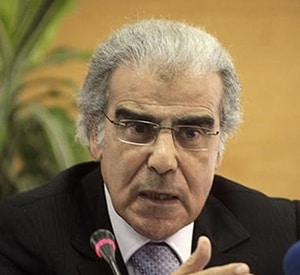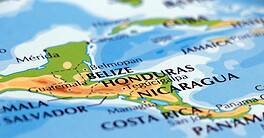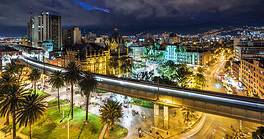Morocco’s central bank governor, Abdellatif Jouhari, talks about how Bank Al-Maghrib is adapting to new roles and greater inclusivity.

Global Finance: How would you evaluate the resilience of Moroccan banks and their compliance with prudential rules?
Abdellatif Jouhari: The Moroccan banking system’s business model is based on intermediation, the collection of savings and the financing of economic actors. The sector has undergone significant changes over the past two decades, allowing a wide diversification of activities both at sectorial and geographic level, particularly on the African continent, where the Moroccan banks are now present in 27 countries. This, combined with commitment to maintain a legal and regulatory framework that converges with international standards, has helped the Moroccan banking sector sustain financial performance and promote robustness. The sector has thus shown strong resilience in the face of various episodes of external shocks following the international financial crisis.
GF: The central bank of Morocco’s legal status recently changed. What are the implications?
Jouhari: The new status reinforces the independence of the central bank for better efficiency and clearer responsibilities. It also broadens our field of intervention and strengthens standards of good governance. In addition to greater prerogatives in defining monetary policy, the central bank now has the mission to implement the exchange rate reform and can advise the government on that matter. As a member of the Committee for Coordination and Surveillance of Systemic Risks set up by the banking law, Bank Al-Maghrib can take any measure to ensure the country’s financial stability.
GF: Two years after the launch of a new exchange rate regime, what is the feedback on this reform?
Jouhari: The reform aims to support the competitiveness of the economy and strengthen its ability to absorb external shocks. Implementation began in 2018 and is currently taking place in good conditions. The banking system is integrating it, economic operators are adapting and we are witnessing a positive evolution of the interbank foreign exchange market. In addition, the dirham exchange rate has evolved without intervention of the central bank, reflecting a good alignment with the fundamentals of the economy.
The new policy contributes to Casablanca Finance City’s positioning as a regional financial hub. To fully succeed however, the reform needs to go hand in hand with an overall consolidation of macroeconomic balances. This implies structural reforms to boost productivity, economic diversification as well as a competitive and higher value-added export offer.
GF: Morocco opened up to Islamic finance two years ago. How is the sector doing?
Jouhari: The Moroccan authorities have adapted legal, institutional, fiscal and regulatory frameworks to promote the development of this new industry. In terms of Islamic compliance, Morocco chose to have a national Shariah board in order to avoid differences in interpretation.
In 2017, the central bank granted authorizations for five new banks, and for three participative windows to start selling participative products. As of July 2019, the new lenders have registered 73,500 bank accounts representing a total of $220 million in deposits. They also financed $755 million of murabaha, mainly for real estate. Last year, the Ministry of Finance and Economy also carried out the first sovereign sukuk issuance, for $105 million. Participatory finance should continue to grow in the years to come, with more corporate activities as well as the launch of takaful participatory insurance and Shariah-compliant capital markets.
GF: What are the highlights of the national financial-inclusion strategy launched in 2016?
Jouhari: This strategy defines a common vision to accelerate the socioeconomic development of Morocco through better access to financial services. There are a series of goals we aim to achieve by 2023 and 2030. Our approach stems from consultations we’ve had with the local ecosystem stakeholders as well as public and private operators. We have also analyzed the lessons from other countries that have rolled out successful financial-inclusion policies.



